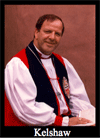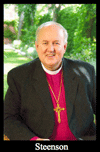History of the Episcopal Diocese
of the Rio Grande
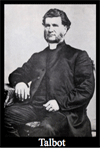
The saga of what is now the Episcopal Diocese of the Rio Grande began to unfold, in 1863, during the abortive attempt by Padre Jose' Antonio Martinez of Taos to ally himself and his Roman Catholic congregations with the Episcopal Church. Bishop Joseph Cruickshank Talbot undertook a foray into his vast Diocese of the Northwest, four years after New Mexico had been officially recognized by the Episcopal General Convention. Talbot held services at Fort Union and Santa Fe, before venturing two days northward to Taos. There he encountered Martinez, who had been defrocked in part for celebrating the Eucharist in Spanish, according to the newly translated Episcopal Book of Common Prayer, well ahead of Talbot's arrival. Prejudice prevailed, however, when Talbot forsook the Padre's offer of 3,000 souls, and no further apostolic mission had an "Episcopal" bearing until the 1872 visitation of the Rt. Rev. George Maxwell Randall. Bishop Randall's tour is significant because, after confirming three persons in Santa Fe, he headed south to Grace Church, Mesilla (site of the Treaty of Guadalupe Hidalgo in 1848, and the first Episcopal Church in the Mesilla Valley) and Las Cruces, thus laying the foundations for a string of congregations along the Rio Grande.

With bishops came priests, and two of them, the Rev. Henry Forrester and "Parson" Joseph Wilkin Tays, linked New Mexico with Southwest Texas (the Roy Bean country, west of the Pecos River) to form the boundaries of the current Diocese. In 1874, Chaplain Forrester accompanied Bishop Adams to Santa Fe, Albuquerque, Fort Selden, Mesilla Park and Silver City before Adams, in a matter of weeks, aborted his tour and abandoned Forrester to the wiles of the Southwest. Undeterred, Forrester assumed ecclesiastical oversight of the territory, at the behest of the Presiding Bishop, Benjamin B. Smith of Kentucky. He reported missionary outposts in 15 New Mexico settlements, including Las Vegas, where the oldest church building functioned as a "quasi-cathedral." It was Forrester who enhanced the work at Santa Fe, from Good Shepherd, through St. Thomas into The Church of the Holy Faith. By 1890, Forrester was the first resident clergyman at the struggling mission of Albuquerque, St. John's, from where he roamed-at-large across the District. In 1893, he also became General Superintendent of the Mission in Mexico, under his new Bishop and Commissary, John Miles Kendrick, a post he held for over ten years. Forrester took special care to instruct his Mexican parishioners about the ancient roots of the Anglo-Catholic Mission through his booklet entitled, "La Iglesia Catolica: un Bosquejo Historico." Frequently nominated to the episcopate, Forrester died in 1904, "as he lived, a missionary of the first order, worthy to be counted among the true heroes of the Faith" <Stoney, LTC, p. 34>.
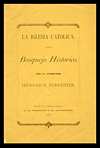
Judge Judd Gaylord Clarke presided over Morning and Evening Prayer at his home in Franklin, TX ("El Paso," from 1880), a year before Tays arrived in 1870 to minister to a congregation of four souls. Tays, at various times, opened Franklin's first school for about a dozen children, applied his talent as a surveyor, assumed ownership of the El Paso Times, was a member of the Town Council and the Board of the First National Bank, accumulated land that increased in value and, by local standards, became fairly prosperous. Tays deeded a block of property to the then Diocese of Texas for a Church of St. Clement's, in which he held services by 1881. In November, 1884, he conducted the funeral of a Mexican smallpox victim, contracted the disease, himself, and died within a week. So remote was this Texas outpost that, by 1895, the 196 communicants and 31,000 square miles became part of the Missionary District of New Mexico and Southwest Texas. The imprint of both Forrester and Tays is still discernible.
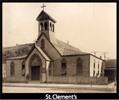
Bishop Kendrick, consecrated in 1889, lived variously at Las Vegas, St. Paul's (under the altar of which his predecessor George Kelly Dunlop is buried) at Albuquerque, El Paso, Phoenix and California, and kept a watchful eye over the machinations of his District encompassing New Mexico, Arizona, SW Texas and Mexico, an area a third the size of the United States! Over 8,000 letters to Kendrick have survived in IHSF, the Diocesan Archives, from sundry clerics and lay persons, giving a detailed picture of the rapid expansion under his care. By 1900 there were two parishes (El Paso, St. Clement's and Albuquerque, St. John's) and fourteen missions, manned by ten clergymen.
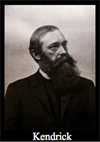
Bishop Frederick Bingham Howden, who followed in 1914, "looked every inch a bishop,"...and was found to be, "spiritually and mentally...as impressive as he was physically" <Stoney, LTC, p. 69>. Howden inherited 40 communities that had been introduced to the Episcopal Church, and he benefited from the introduction of the automobile. Howden held together the disparate congregations throughout the years of WWII, but sadly lost his son, the Rev. Ted Howden of Roswell, St. Andrew's, who became Chaplain to the National Guard, was captured at the surrender of Bataan and died in a Japanese prison camp in 1942. The arrow in both Kendrick's and Howden's quiver was the Rev. Hunter Lewis, affectionately known as "Preacher." Lewis, a Virginian, started out a Baptist, before enrolling in the Virginia Theological Seminary. Preacher Lewis, from 1905, single-handedly walked the sands along the Rio Grande and established missions envisioned by Forrester and Tays between the outskirts of El Paso and Albuquerque. In all, he is credited with building seven churches, serving 21 missions and ministering to over 4,000 persons, until his death in 1948. His unconventional habits are chronicled in Opal Lee Priestley's biography, Journeys of Faith, a good anecdotal read, but throughout he was unswervingly loyal to his biblical and apostolic heritage.
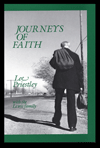
Bishop James Moss Stoney, ably served the District from his consecration in 1942, until his retirement in 1956. Stoney set out to instruct and prepare 1000 for confirmation per year (a goal reached by his successor, Kinsolving) which greatly contributed to the District achieving diocesan status in 1952. Stoney not only had an appreciation of antiquity, but he took on the responsibilities of historian and made the first attempt to salvage the records of the Diocese, that he observed were neglected and disappearing. Together with Dr. Myra Ellen Jenkins (NM State Archivist), Stoney published, Lighting the Candle, the first comprehensive account of the Diocese. The book brought into focus Talbot's tentative visit to the District in 1863, through succeeding decades, to Kinsolving's Installation as Ordinary in 1956. Regrettably, this work is not widely read, nor has any account been contemplated for the last half of the 20th century.
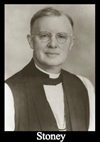
While there had been controversies, such as churchmanship, ritual customs and digressions from the literal use of the Book of Common Prayer, no one could have anticipated the upheaval that besieged the tenure of the Rt. Rev. Charles James Kinsolving, 1956-72. In the spirit of civil rights, the Episcopal Church was rocked by the introduction of the General Convention's Special Program (GCSP), which sought to distribute funds to societies and pressure groups, many of which lay outside the traditional norms of conservative Episcopalians. In particular, Bishop Kinsolving challenged grants to recipients in his Diocese, which he and many felt were not within the GCSP guidelines. The immediate result was a catastrophic loss of finances to many congregations. Although Kinsolving and Dr. Jenkins made spirited protestations in person, some grants were consigned and took a toll, both on lay support throughout the Diocese and upon the health of its bishop. In spite of these measures, the Diocese enjoyed consistent expansion - increasing by half in communicant strength during Kinsolving's episcopate - as he quietly underwrote and cajoled his missionary clergy to meet fiscal obligations and to maintain sacramental standards and personal propriety. His was a bold and sacrificial attempt to hold fast to the Faith immemorial, yet, thereafter, neither he nor his Church was ever the same.

Bishop Richard M. Trelease, 1971-88, was a man of his age. He forecast liturgical novelty, heartily allied himself to the new Prayer Book and Hymnal, endorsed the ordination of women and implemented the directives of successive General Conventions throughout his jurisdiction. During his tenure over the newly styled Diocese of the Rio Grande, in part because of national issues, rumblings stirred in the hinterland. Trelease doubled the number of men and women in Holy Orders, but confirmations collapsed, communicant strength dwindled to wipe out the gains of his predecessor, and historically minded clergy set up independent, Anglican-styled-centers in Alpine and El Paso, TX, and in Deming, Las Cruces and Albuquerque, NM, to attract disaffected parishioners. Seeds had been sown for the harvest of tares.

The Diocese showed signs of recovery in the last decade of the 20th century. The statistical numbers stabilized, and the finances multiplied through a diocesan pool of investments. Some monies were decentralized when the four Deaneries were authorized to fund their own local programs. Forrester's writings about the ancient legacy of the Christian Faith morphed into living history through the evangelical tours of Bishop Terrance Kelshaw, 1989-2005, who led annual pilgrimages to the biblical and patristical sites of saints and sages. From Britain to the Holy Land, parishioners feasted on Anglican lore of their apostolic heritage. But the new millennium threatens to launch the Arc of the Diocese into a deep and forbidding swell. The precepts of polity, sexuality and gender take on an international scope, as the world-wide Communion explores unchartered ecclesiastical seas. The Rt. Rev. Jeffrey Neil Steenson, 2005-2007, Oxford scholar - steeped in the birthright of the Early Church Fathers, is best able to draw on his vast knowledge of the ancient Councils to steer a course for his spiritual family, safely into the bliss of eternal Salvation.
